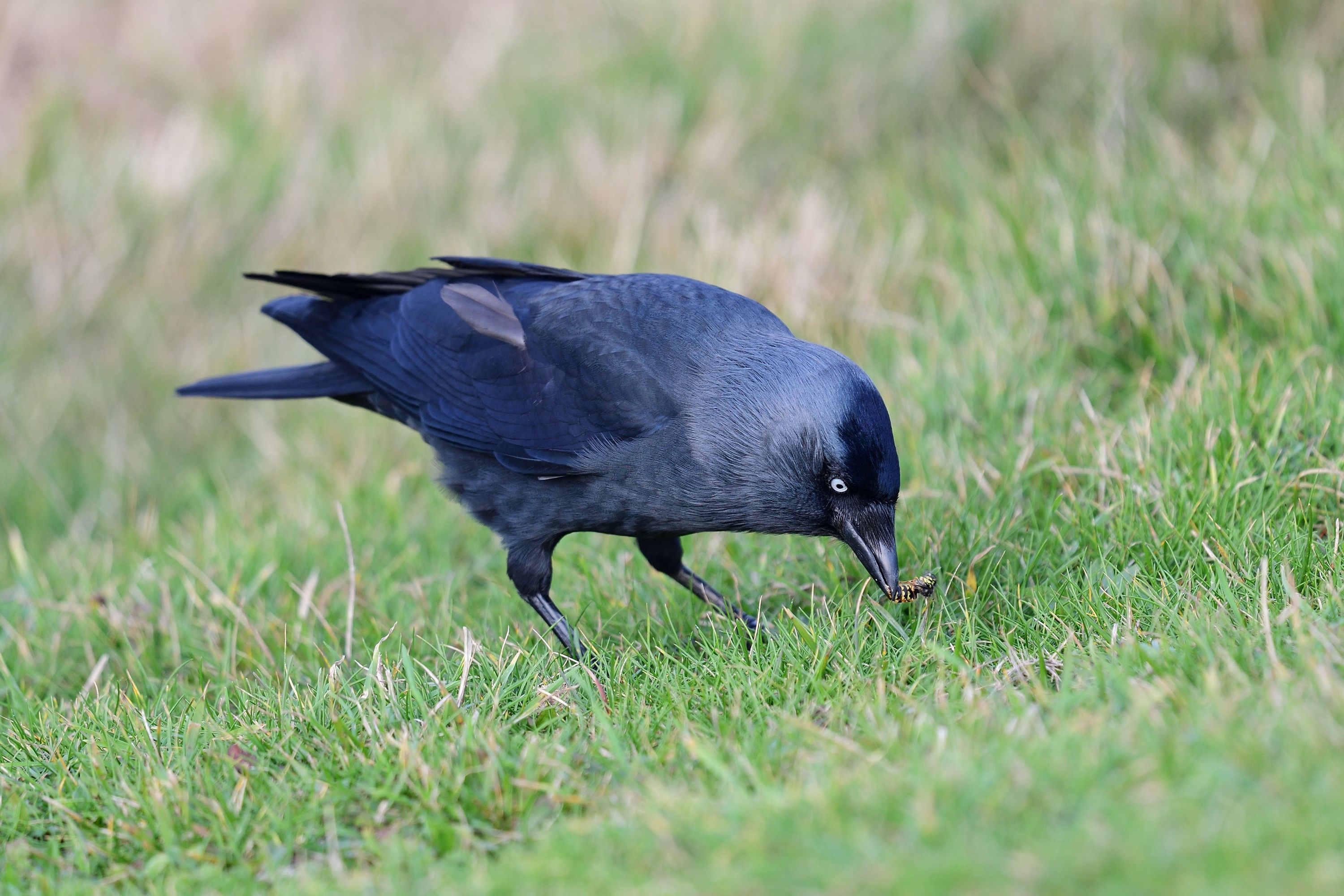Western jackdaw
(Coloeus monedula)

Description
The western jackdaw (Coloeus monedula), also known as the Eurasian jackdaw, the European jackdaw, or simply the jackdaw, is a passerine bird in the crow family. Found across Europe, western Asia and North Africa; it is mostly resident, although northern and eastern populations migrate south in the winter. Four subspecies are recognised, which differ mainly in the colouration of the plumage on the head and nape. Linnaeus first described it formally, giving it the name Corvus monedula. The common name derives from the word jack, denoting "small", and daw, a less common synonym for "jackdaw", and the native English name for the bird. Measuring 34–39 centimetres (13–15 in) in length, the western jackdaw is a black-plumaged bird with a grey nape and distinctive pale-grey irises. It is gregarious and vocal, living in small groups with a complex social structure in farmland, open woodland, on coastal cliffs, and in urban settings. Like its relatives, jackdaws are intelligent birds, and have been observed using tools. An omnivorous and opportunistic feeder, it eats a wide variety of plant material and invertebrates, as well as food waste from urban areas. Western jackdaws are monogamous and build simple nests of sticks in cavities in trees, cliffs, or buildings. About five pale blue or blue-green eggs with brown speckles are laid and incubated by the female. The young fledge in four to five weeks. The western jackdaw measures 34–39 centimetres (13–15 in) in length and weighs around 240 grams (8.5 oz). Most of the plumage is a shiny black, with a purple (in subspecies monedula and spermologus) or blue (in subspecies cirtensis and soemmerringii) sheen on the crown, forehead, and secondaries, and a green-blue sheen on the throat, primaries, and tail. The cheeks, nape and neck are light grey to greyish-silver, and the underparts are slate-grey. The legs are black, as is the short stout bill, the length of which is about 75% of the length of the rest of the head. There are rictal bristles covering around 40% of the maxilla and 25% of the lower mandible. The irises of adults are greyish or silvery white while those of juveniles are light blue, becoming brownish before whitening at around one year of age. The sexes look alike, though the head and neck plumage of male birds fades more with age and wear, particularly just before moulting. Western jackdaws undergo a complete moult from June to September in the western parts of their range, and a month later in the east.
Taxonomic tree:







